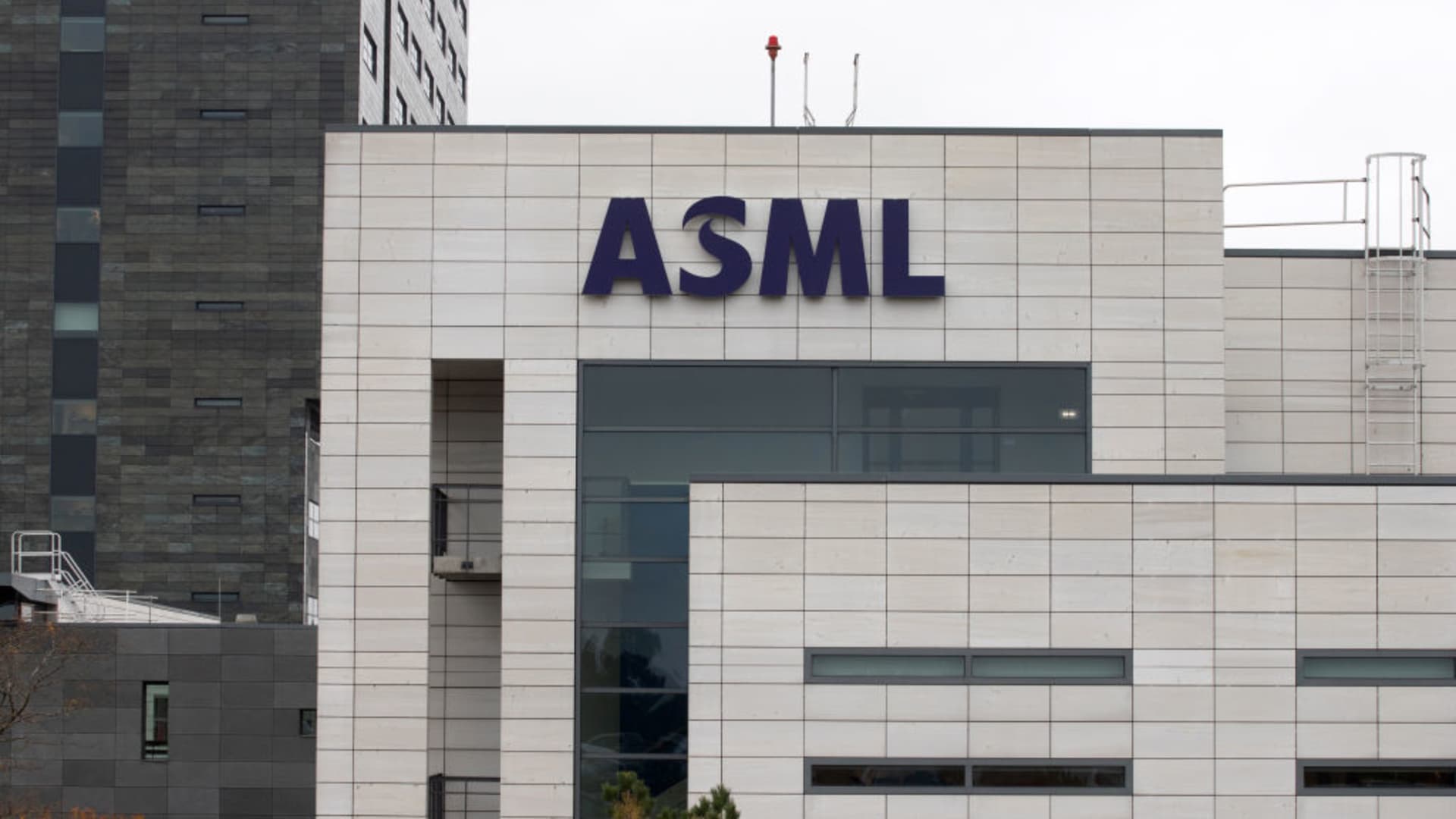
Shares of ASML have soared this year on the buzz around semiconductor firms and artificial intelligence. Its Netherlands-listed shares have jumped about 32% in the year to date, while its U.S.-listed ones have surged almost 40%. The gains are tied to those of Nvidia, whose shares have soared this year, thanks to interest in AI. Nvidia relies on TSMC to manufacture its graphics processing units. TSMC, in turn, relies on machines from ASML, which are required to manufacture the world’s most advanced semiconductors. ASML has a 100% market share in extreme ultraviolet lithography (EUV) machines, which giants such as TSMC and Samsung use to make their chips. ASML on Wednesday posted a jump in revenue and profit in the second quarter, and raised its outlook for 2023. But it also warned about macroeconomic uncertainty. Where will the stock go from here? CNBC Pro trawled through Wall Street research to find out. U.S.-China tensions ASML was recently caught in U.S.-China tensions — the Dutch government recently announced export restrictions that could cut off China from key chipmaking tools — but the company said the new restrictions are unlikely to have a material impact on its business. Analysts aren’t overly concerned either. UBS gave ASML a buy rating and a 12-month price target of 780 euros ($875), representing around 17% upside from its Tuesday close. Demand from China is likely to remain resilient in the next one to two years, the bank said in a July 12 note, citing its analysis of China’s wafer fab equipment market. “Duration of weak demand is a key focus with its impact on 2024 the primary concern for investors, however in our view China will likely provide a buffer and offset more challenged segments,” UBS said. Trent Masters, global portfolio manager at Alphinity, said ASML is “getting caught in some of the US / China wash but their leading edge lithography equipment (EUV) was already restricted in China.” He added that the risk posed by the China restrictions represents about 5% of its revenue and backlog. But he described ASML as a very high quality business that will benefit from the growth of the semiconductor market. He predicts that semiconductor market revenue will be worth about $1 trillion in 2030. “ASML as the key equipment supplier underpinning the tech advancements required so can see [double digit] to mid-teens growth over the next 3-5yrs when we get through this current period of volatility,” Masters said. Morgan Stanley, for its part, said in a July 4 note that the new restrictions were “largely expected.” “There is potential hereafter for the US government to tighten things beyond this … but we still expect the exposure for ASML to sum to 3-4% of the backlog,” the bank said. “We believe ASML should trade at a premium to semi cap peers, given dominance in a space with growing share of overall [wafer fab equipment] spend,” it added. It gave ASML a price target of 770 euros, or potential upside of nearly 16%. Artificial intelligence The expansion of AI infrastructure will require an increasingly advanced level of semiconductors, such as graphics processors and microprocessors, Jefferies said in a recent note. And that’s set to benefit ASML, among other firms, it said. But other banks weren’t so optimistic. “Despite optimism surrounding AI, we see high inventories in key semis end market as a potential headwind to WFE growth,” said JPMorgan in a recent note. “ASML and other semicap stocks have recently rallied partially driven by the optimism on potential of AI, and the strong guidance from NVIDIA in May. In the long term, we believe that AI will be a key driver of semiconductor growth but for the moment the Large Language Models like ChatGPT that run on AI optimized servers and resources for this technology are limited to the datacenter,” it added. UBS said that although ASML is “clearly an enabler of AI,” the incremental Nvidia opportunity represents only a low/mid single digit percentage of sales for the company. “We expect ASML to downplay the trend in the short term,” it said. Analysts covering the company gave its Netherlands-listed shares potential average upside of nearly 13%, according to FactSet. — CNBC’s Michael Bloom contributed to this report.
